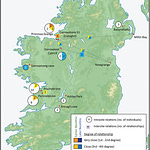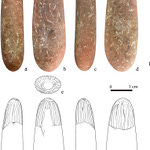The Bone Beneath the Ritual
In the dry soils of southern Texas, between the brush country and the Gulf shore, archaeologists have long noted something curious: modified human bones—grooved, snapped, and incised—tucked among shell middens and hearth pits. Though remarked upon as early as 1932, they remained largely unstudied. That is, until now.
In a new paper published in the International Journal of Osteoarchaeology1, Dr. Matthew S. Taylor reexamines these skeletal fragments not simply as anatomical remnants but as cultural artifacts. His analysis of 29 modified human bones, curated at the Texas Archaeological Research Laboratory (TARL), sheds light on how prehistoric peoples in South Texas treated their dead—not as objects of taboo, but as conduits for memory, power, and perhaps sound.
“The human bone artifacts act as confirmation that early peoples on the Gulf Coast did not view human bodies, or the reduction of human remains, as taboo or off-limits,” Dr. Taylor notes.
Listen to this episode with a 7-day free trial
Subscribe to Anthropology.net to listen to this post and get 7 days of free access to the full post archives.










